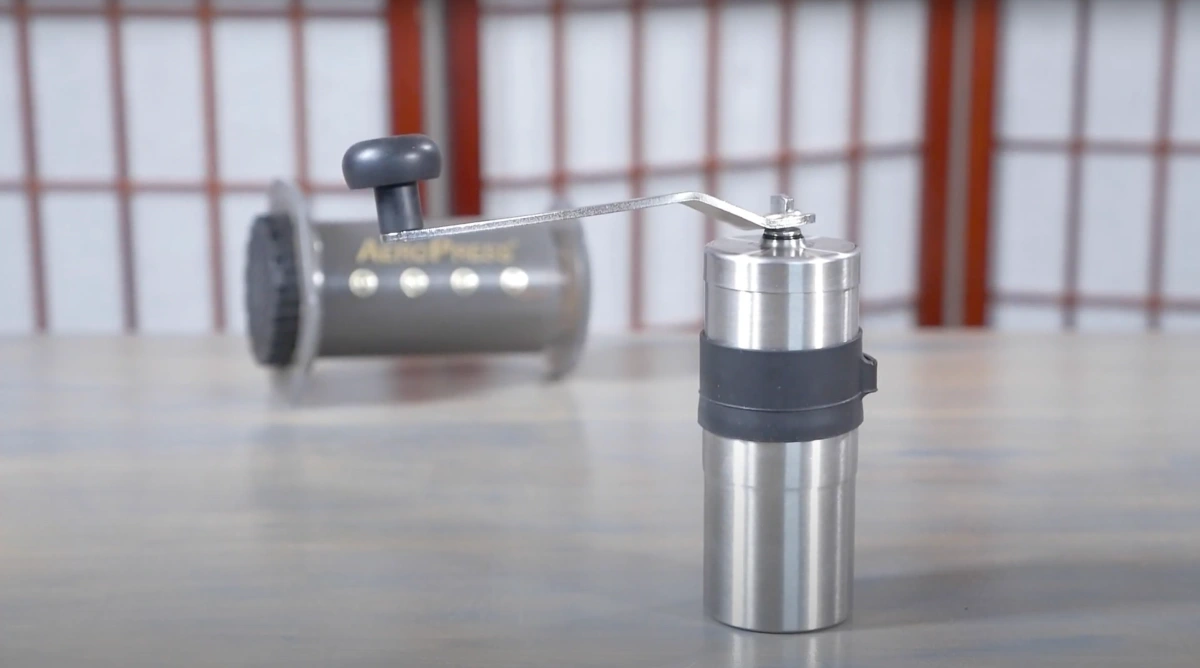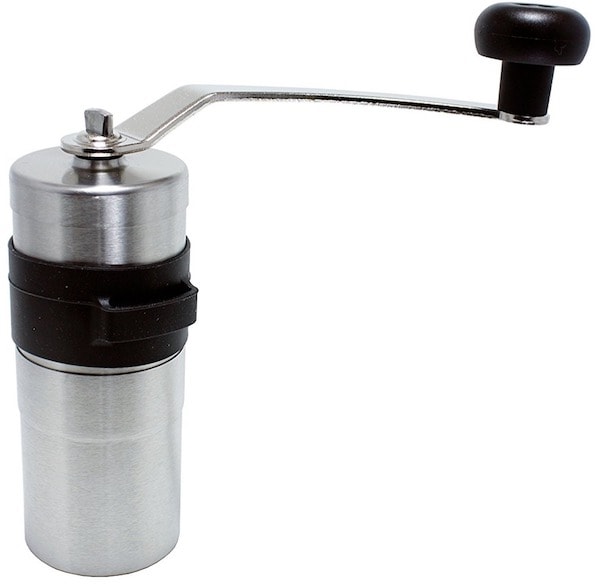Once a titan in the realm of hand coffee grinders, Porlex has long been synonymous with quality, durability, and portability. Its original Porlex Mini grinder gained a cult following among those who wanted a portable coffee grinder to travel with.
Now, the company aims to build on that legacy with the release of the Porlex Mini II. But in a rapidly evolving market teeming with innovative and high quality budget options, does it still hold its ground as a grinder worth considering? In this the Porlex Mini II review, I’ll delve into the nitty-gritty to find out and explain why you should steer clear of this hand grinder in 2024.
Summary: Porlex Mini ii Grinder
- Stainless steel construction for long-lasting durability
- Very lightweight and portable makes it ideal for camping and road trips
- Compact size fits snugly into an Aeropress
- Can be used for espresso and filter coffee
- Big upgrade on the original Porlex Mini coffee grinder
Upgraded Design and Build Quality
At first glance, the Porlex Mini II retains the minimalist, cylindrical aesthetic that made its predecessor a hit. The brushed stainless steel body exudes a sense of understated elegance.
With dimensions just under 14 cm in height and less than 5 cm in diameter, the grinder is compact enough to fit into the palm of your hand or the hollow of an AeroPress.
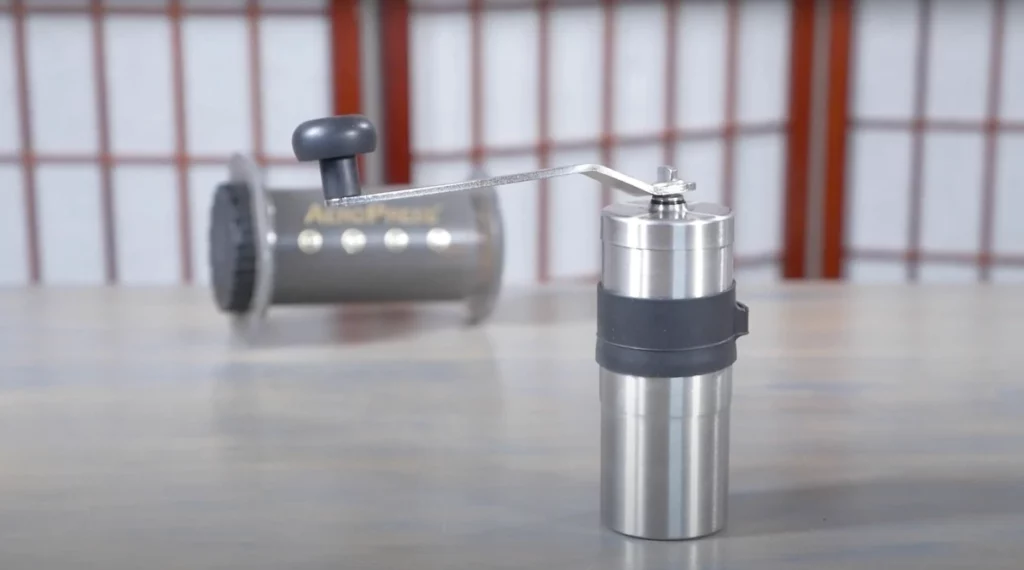
However, it’s worth noting that the Mini II is slightly heavier than the original, weighing in at around 250 grams (8.8 oz), a 40-gram increase that speaks to its enhanced build quality. I still found it extremely lightweight in the hand and much lighter than the majority of it’s competitors.
The body is constructed from brushed stainless steel, while the crank arm is made from die-cast stainless steel. These choices not only make the grinder robust but also make it feel a lot more premium than the original model that I thought felt like a cheap and flimsy toy.
In terms of parts and accessories, the Porlex Mini II comes with a crank handle and a rubber band to secure the handle during travel. While the color options are limited to the classic stainless steel, the quality of the materials and the finish make up for the lack of variety.
One of the most significant design changes is the flat wing nut, replacing the original’s pentagonal nut. This seems to be a response to user feedback about wear and tear, although I found that the material still feels a bit soft after extended use.
When it comes to capacity, the Mini II remains a single-serve grinder with a bean hopper that maxes out at 20 grams. While this may not be ideal for those looking to brew multiple cups, it aligns well with the grinder’s focus on portability and individual use.
Grind Adjustment and User Experience
The Porlex Mini II brings a more nuanced grind adjustment mechanism to the table, setting itself apart from its predecessor. The adjustment is internal, a feature I’m not a fan of, especially given the number of great options with external ring adjustments.
The Mini II operates on a click-based system with 16 distinct steps, offering a total range of 592 microns. Each click corresponds to a 37.5-micron adjustment. This specific micron range per click does not allow for precise dialing-in; grinders like those by 1Zpresso often have step adjustments of 12 microns per click. This finer adjustment range makes it much easier to dial in beans, especially for espresso.
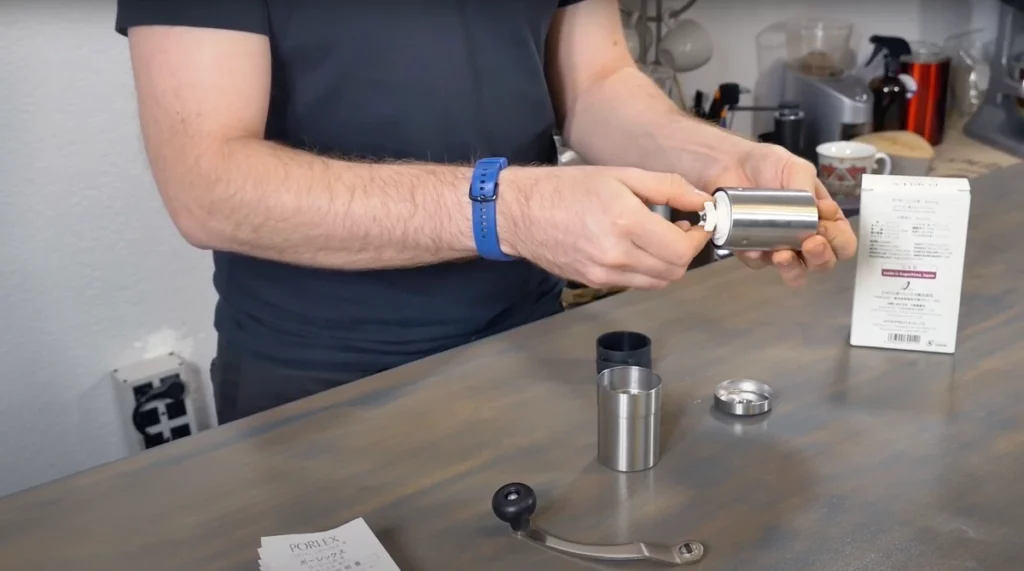
Speed is another area where the Mini II has issues. The new burrs are designed to produce approximately 1.3 times more grounds with the same number of rotations compared to the original model. While the exact number of rotations will vary depending on the grind size and the type of beans, the Mini II definitely grinds faster than the original model.
However, in my testing, an 18g dose for Aeropress took roughly 72 seconds. This equates to a grind speed of 1g per 4 seconds. This is far slower than the top manual coffee grinders that can grind at a rate of 1-2 grams per second.
The crank handle on the Mini ii is comfortable and easy to operate, and the new flat wing nut design adds an extra layer of stability, minimizing the risk of the handle dislodging during grinding. Additionally, the grinder can stand vertically on its burrs, a small but thoughtful feature that enhances its user-friendliness.
Porlex Mini II Grind Settings
- Espresso: Recommended settings are 1-2 clicks, which equates to 37.5 – 75 microns.
- AeroPress: For a standard AeroPress brew, 3-4 clicks are recommended, translating to 112.5 – 150 microns.
- Medium-Fine (e.g., pour-over): A setting of 5-6 clicks, or 187.5 – 225 microns, is suggested.
- Medium (e.g., drip coffee): For a balanced drip coffee, aim for 7-8 clicks, which is 262.5 – 300 microns.
- Medium-Coarse (e.g., Chemex): A setting of 9-10 clicks, or 337.5 – 375 microns, is recommended.
- Coarse (e.g., French Press, Cold Brew): For these methods, 11-12 clicks are suggested, translating to 412.5 – 450 microns.
Porlex Mini II Grind Performance
The Porlex Mini II comes equipped with a new set of ceramic burrs, a material choice that has both its advocates and critics. While ceramic burrs are known for their durability and resistance to heat, they have a tendency to crush beans rather than cut them. This crushing action often results in a higher proportion of fine dust particles, which can lead to over-extraction and bitterness in the final cup.
The burrs in the Mini II are designed to be more stable than those in its predecessor, thanks to additional stabilizers. However, in my testing they still exhibited some wobble during grinding, which contributed to uneven particle sizes.
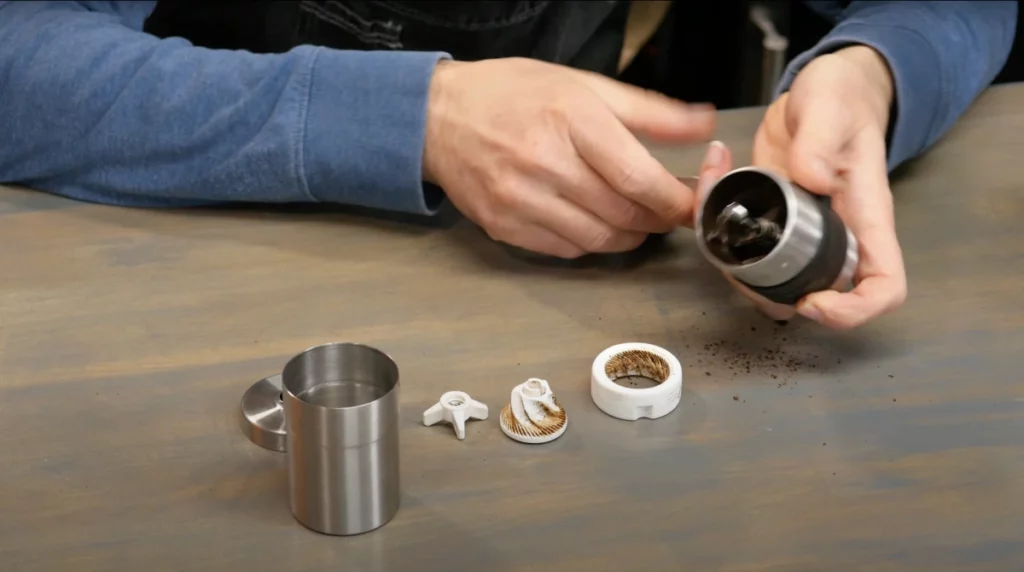
This was particularly noticeable when grinding for methods that require a very even grind, such as espresso. At finer ranges for espresso, moka pot and Aeropress, the Porlex Mini ii produces a lot of fines. However, as I moved into coarser ranges for pour over and French press, the grind size became extremely inconsistent with huge numbers of fines.
When it comes to different roast profiles, the Mini II’s ceramic burrs don’t discriminate much between light and dark roasts in terms of grind consistency. However, the crushing action of the ceramic burrs produced more fines when grinding darker roasts.
Grinders at a similar price point like the Timemore C2 employ stainless steel burrs and additional stabilizing mechanisms, offer a more even grind across the spectrum. They also tend to cut the beans rather than crush them, resulting in fewer fines and a more predictable brew.
The difference in grind speed is also significant; what takes 3-4 minutes with the Porlex can be done in as little as 30 seconds with more modern designs like the C2.
Coffee Tasting With The Porlex Mini II
Upon brewing coffee with the Porlex Mini II, the first thing that struck me was the lack of clarity in the cup. The presence of fines, a result of the grinder’s tendency to crush rather than cut the beans, leads to a muddled flavor profile. This lack of clarity makes it difficult to distinguish individual tasting notes, diminishing the complexity of the coffee.
The body of the coffee also suffers, leaning towards a heavier, almost sludgy texture. This is particularly noticeable when brewing using methods that rely on a clean cup, like a V60 or Clever Dripper. The fines contribute to over-extraction, leading to a bitter undertone that overshadows the coffee’s natural flavors.
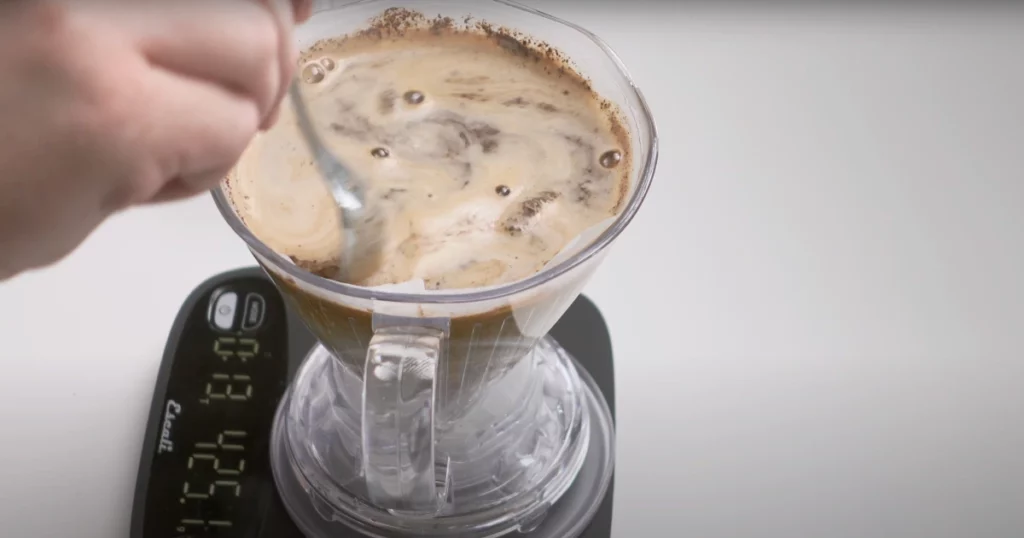
In terms of acidity, the cup lacks the bright, sparkling notes one would expect from a high-quality grinder. Instead, the acidity feels muted, almost as if it’s been weighed down by the excessive fines in the grind. This results in a cup that is not only less complex but also less enjoyable, lacking the vibrant characteristics that make specialty coffee so appealing.
I had some ok cups with this grinder, but my overall experience was extremely poor. I would not want to use it on a daily basis or even on vacation unless it was my only option.
Is The Porlex Mini II Worth It?
Once a pioneer in the hand-grinding coffee space, Porlex has become something of a dinosaur in a rapidly evolving market. While the Porlex Mini II brings some improvements over its predecessor, it falls short in several key areas, particularly grind consistency and overall performance. The brand’s reputation, built on its early success, no longer holds the same weight in today’s competitive landscape.
Given the plethora of outstanding options now available, I cannot recommend Porlex. If budget is your primary concern, there are far more compelling alternatives that offer better performance and value. Brands like Kingrinder, 1Zpresso, and Timemore have surpassed Porlex in terms of grind quality, ease of use, and durability, often at a similar or even lower price point.
While Porlex may have been a game-changer in its time, the game has moved on, and so should you.

Coffee expert and industry insider, I’ve dedicated years to mastering the art and science of coffee making. From scrutinizing particle fineness to evaluating burr shapes, I delve into the minutiae that elevate coffee from good to exceptional. Whether it’s a complex pour-over or a robust espresso, my insights cater to those who don’t just drink coffee, but experience it.

